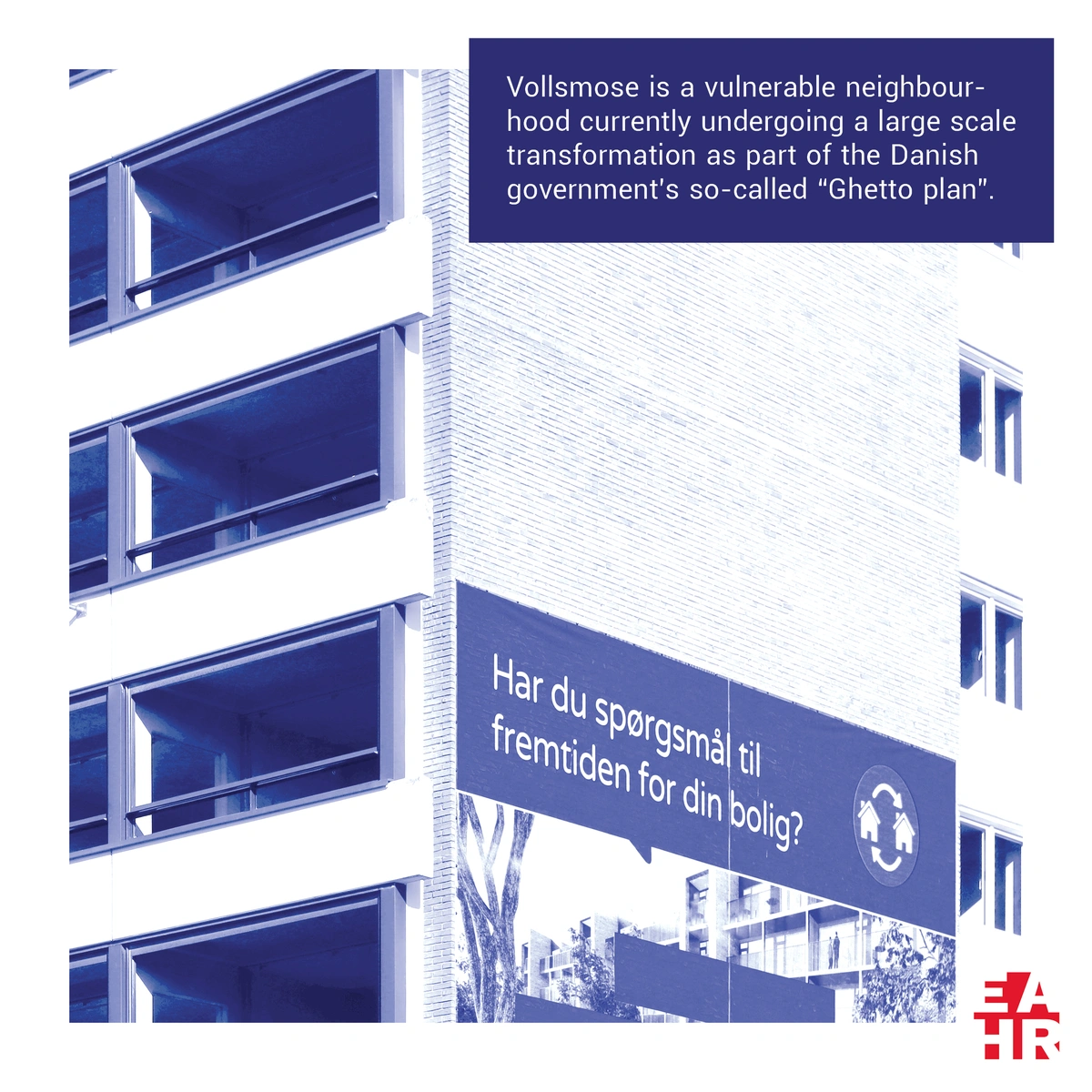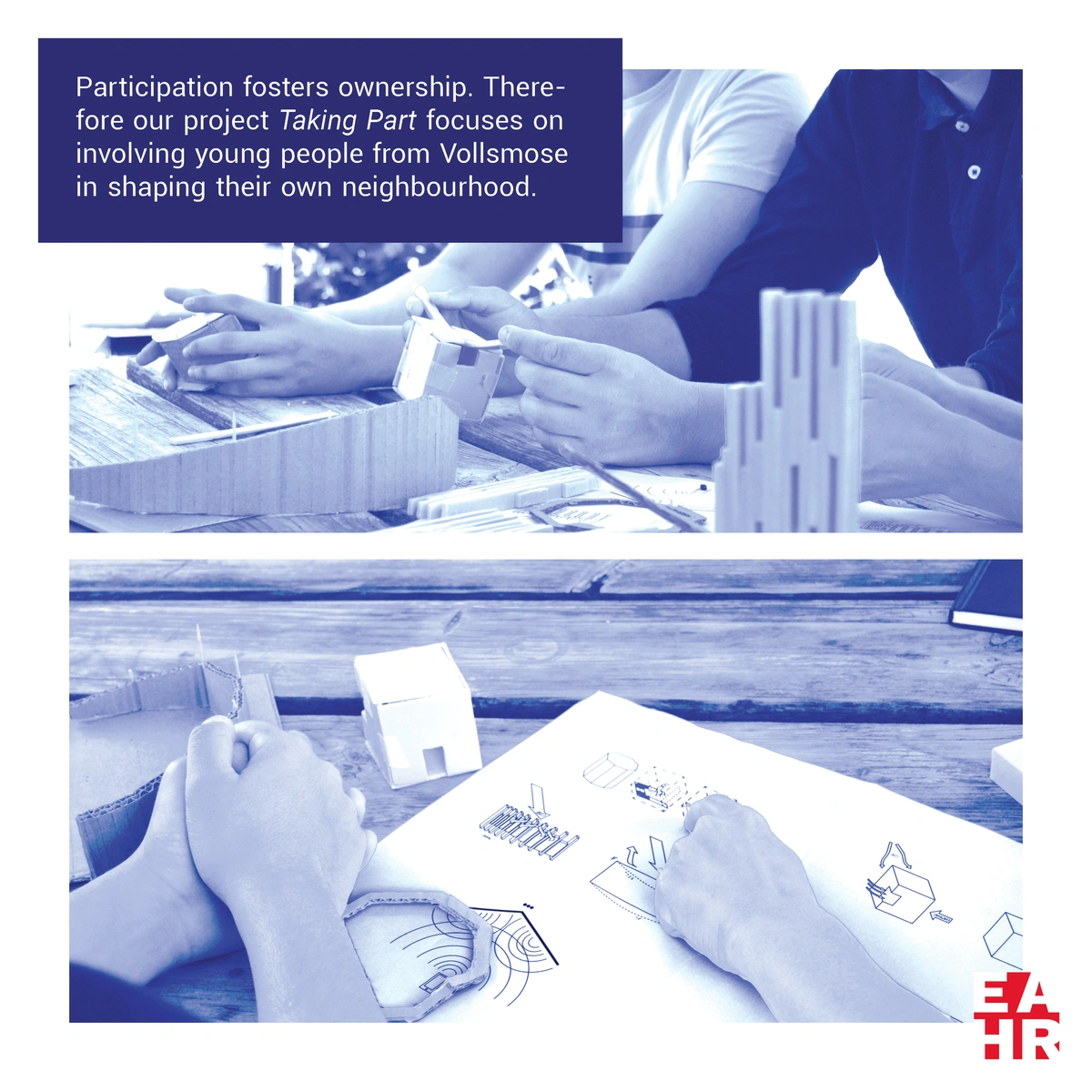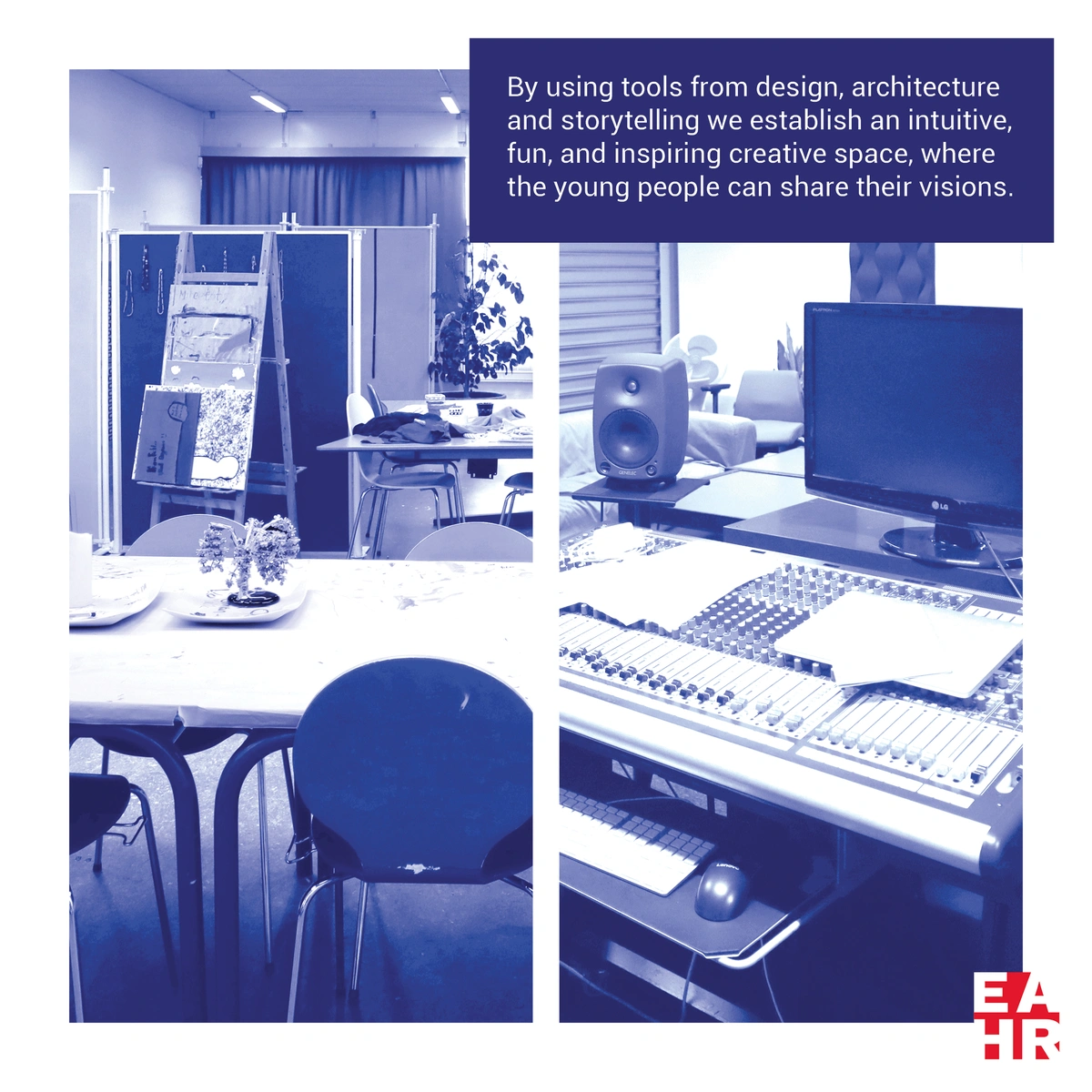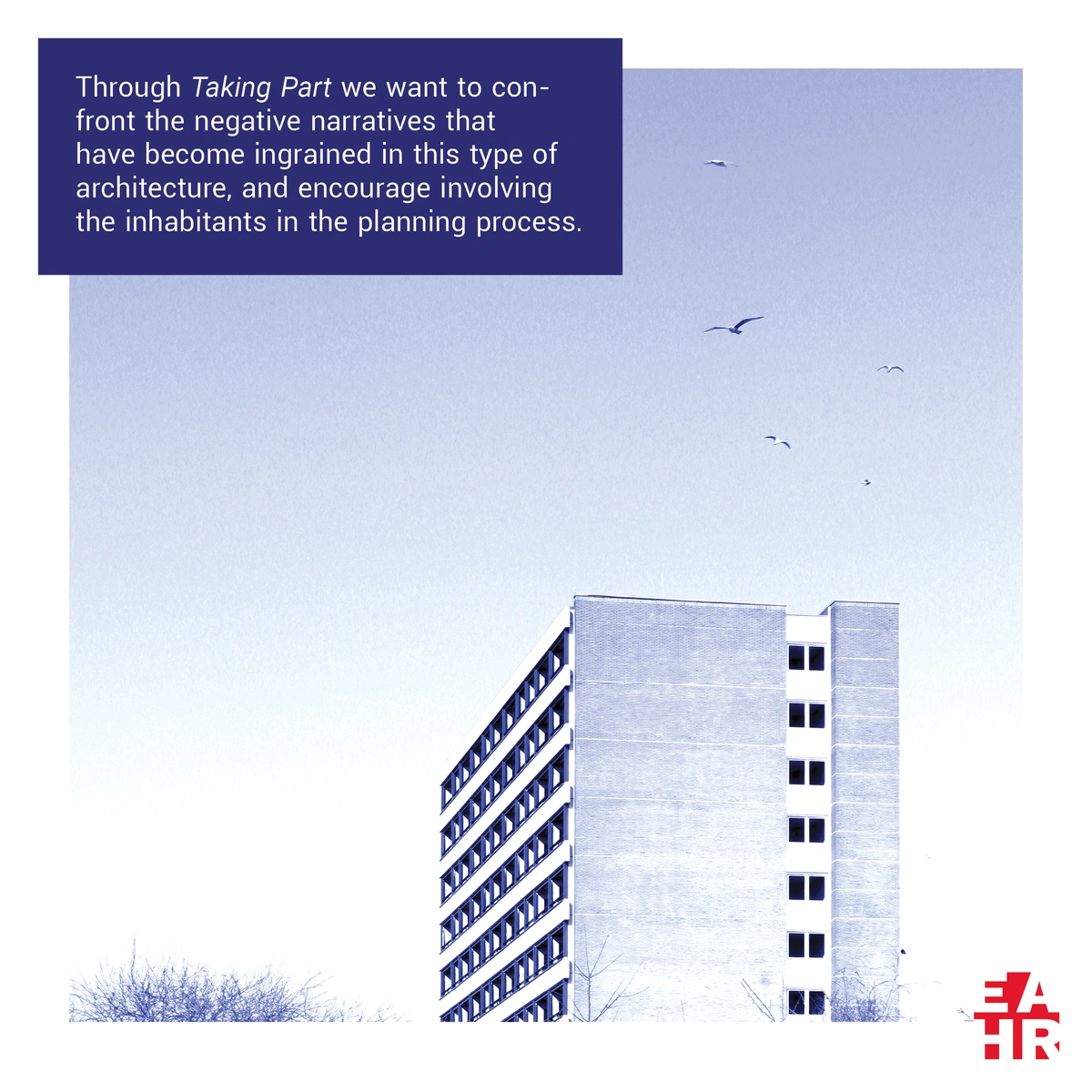In Denmark, people living in vulnerable social housing (so-called “ghettoes”) are being subjected to very intrusive urban planning. In extreme cases the inhabitants are even being expropriated and the buildings are being transformed or torn down. This type of urban planning is a result of larger political strategies and is often formulated and implemented with limited interaction with the people whom the changes will actually affect.
One of the demographics that is commonly disregarded and overheard is teenagers and young adults. In much political rhetoric, young people are often seen as part of the problem, for example in relation to low school attendance and criminal activity, instead of being part of the solution.
At Emergency Architecture & Human Rights (EAHR) we address this issue through our project Taking Part, which takes place in Vollsmose, a vulnerable neighbourhood in the outskirts of the third largest city of Denmark, Odense.
Through a series of creative workshops, we introduce a group of young people from Vollsmose to different design and mapping tools, such as drawing and modelmaking, in addition to tools related to storytelling, such as video and audio recording. Through a temporal approach focusing in turn on the past, the present, and the future, we prompt the participants to firstly register their memories related to specific places, secondly to react to the ongoing architectural transformations, and thirdly to materialize their visions and wishes for the neighbourhood.
The purpose of deploying a mix of tools from across design, architecture and storytelling is to establish an intuitive, fun, and inspiring creative space, where the young people can explore new mediums and use them to reflect upon their personal relationship with the built environment. Another advantage of taking the creative approach is that the participants manifest their ideas in ways that we can collect and share upon conclusion of the workshops. This is another important aspect of our project: we want to share the learnings of the workshops so that the project might have a wider impact.
With our project Taking Part we want to encourage using creative mediums as a way to involve young people in the discussion about the future of their own neighbourhoods. We want to confront the negative narratives that have become ingrained in this specific type of architecture. And we want to promote the concept of shaping the neighbourhood in collaboration with its inhabitants.
When done right, participation fosters ownership. It builds new individual and collective skills. It animates neighbourhoods. On the contrary, a lack of involvement has the adverse effects. Our project Taking part inscribes itself in the broader work of EAHR directed towards empowering communities to speak up and represent themselves in debates concerning the built environment.
At the heart of this work is the question of methodology: how is this best achieved? Led by this question, Taking Part is part of a continuous process towards improving our approach. By employing our experiences from Vollsmose in other neighbourhoods facing similar problems, we want to further qualify tools and methods and spread the learnings. Our participation at the Oslo Triennale is an important step towards this goal. We hope to inspire reflection and create debate about the benefits of youth involvement in urban planning among professionals working in this field.




EAHR is a non-profit organization that works towards strengthening the representation of disadvantaged groups through architecture and urban planning. At the heart of the association is the belief that an active involvement and participation in collaborative processes can strengthen societal coherence, build up new skills, and help bring about more resilient communities. To innovate in the field of participatory design and community involvement our team spans across disciplines such as architecture and anthropology and includes technical skillsets from audio and visual communication.